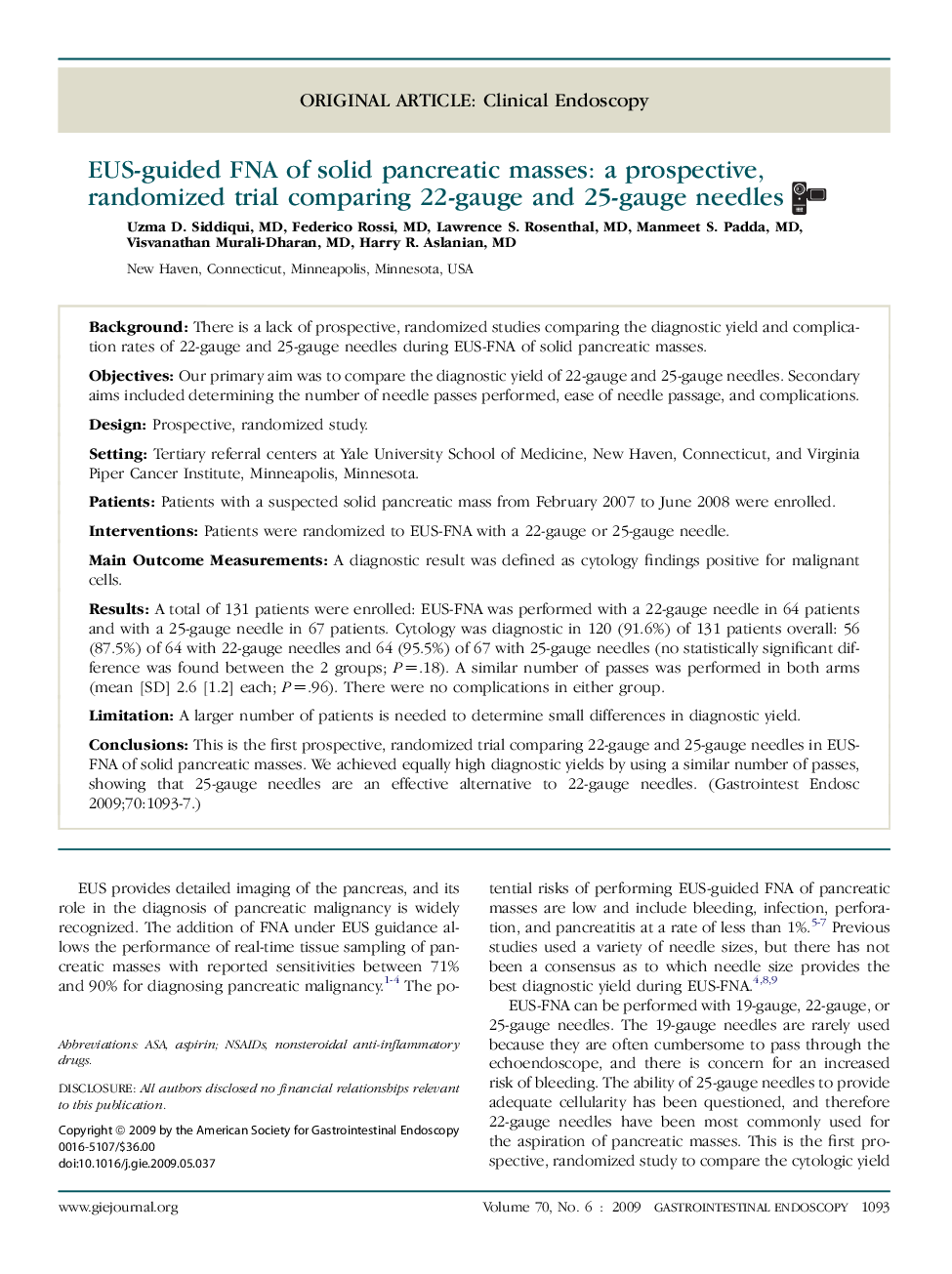| Article ID | Journal | Published Year | Pages | File Type |
|---|---|---|---|---|
| 3305572 | Gastrointestinal Endoscopy | 2009 | 5 Pages |
BackgroundThere is a lack of prospective, randomized studies comparing the diagnostic yield and complication rates of 22-gauge and 25-gauge needles during EUS-FNA of solid pancreatic masses.ObjectivesOur primary aim was to compare the diagnostic yield of 22-gauge and 25-gauge needles. Secondary aims included determining the number of needle passes performed, ease of needle passage, and complications.DesignProspective, randomized study.SettingTertiary referral centers at Yale University School of Medicine, New Haven, Connecticut, and Virginia Piper Cancer Institute, Minneapolis, Minnesota.PatientsPatients with a suspected solid pancreatic mass from February 2007 to June 2008 were enrolled.InterventionsPatients were randomized to EUS-FNA with a 22-gauge or 25-gauge needle.Main Outcome MeasurementsA diagnostic result was defined as cytology findings positive for malignant cells.ResultsA total of 131 patients were enrolled: EUS-FNA was performed with a 22-gauge needle in 64 patients and with a 25-gauge needle in 67 patients. Cytology was diagnostic in 120 (91.6%) of 131 patients overall: 56 (87.5%) of 64 with 22-gauge needles and 64 (95.5%) of 67 with 25-gauge needles (no statistically significant difference was found between the 2 groups; P=.18). A similar number of passes was performed in both arms (mean [SD] 2.6 [1.2] each; P=.96). There were no complications in either group.LimitationA larger number of patients is needed to determine small differences in diagnostic yield.ConclusionsThis is the first prospective, randomized trial comparing 22-gauge and 25-gauge needles in EUS-FNA of solid pancreatic masses. We achieved equally high diagnostic yields by using a similar number of passes, showing that 25-gauge needles are an effective alternative to 22-gauge needles.
